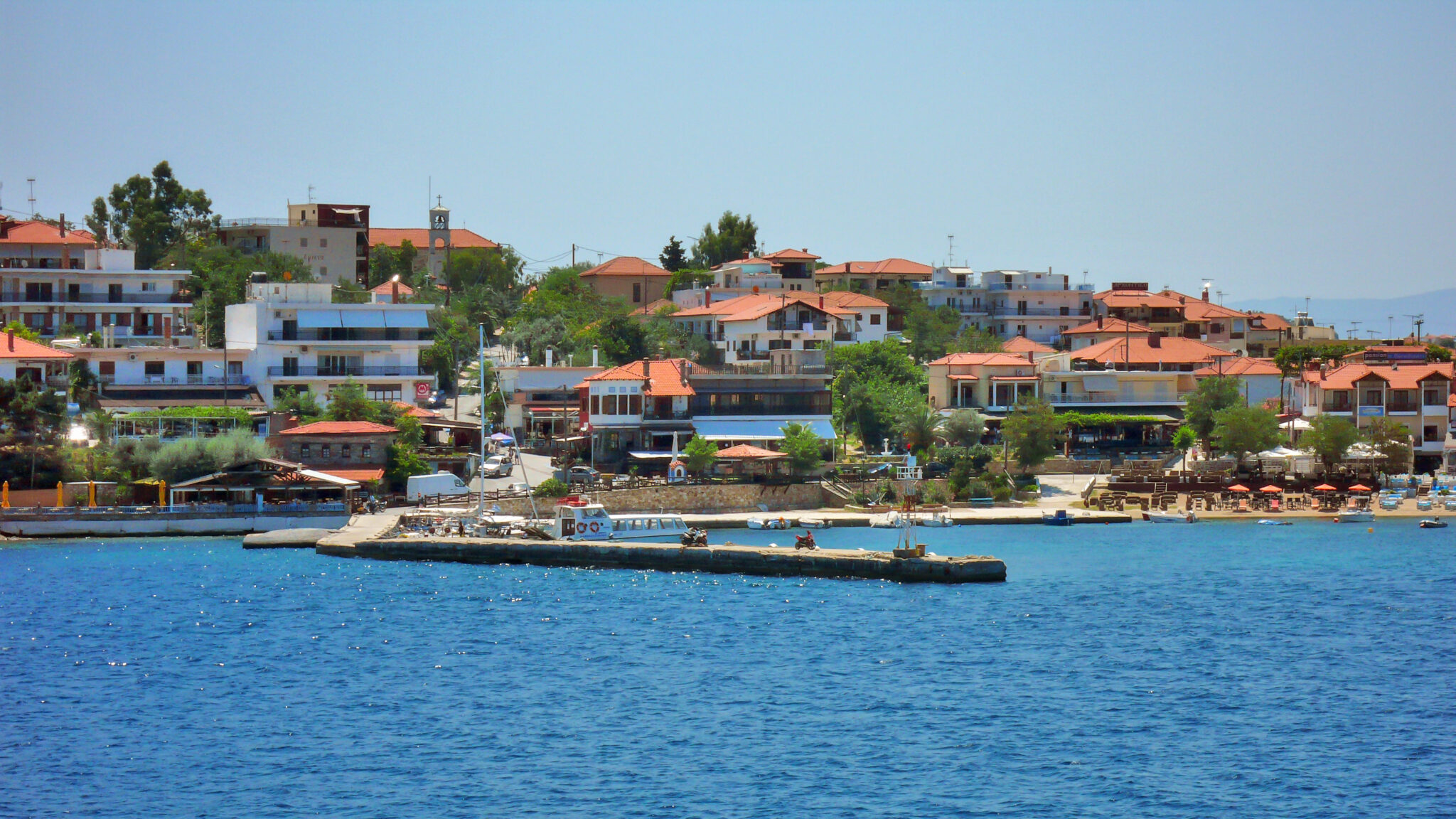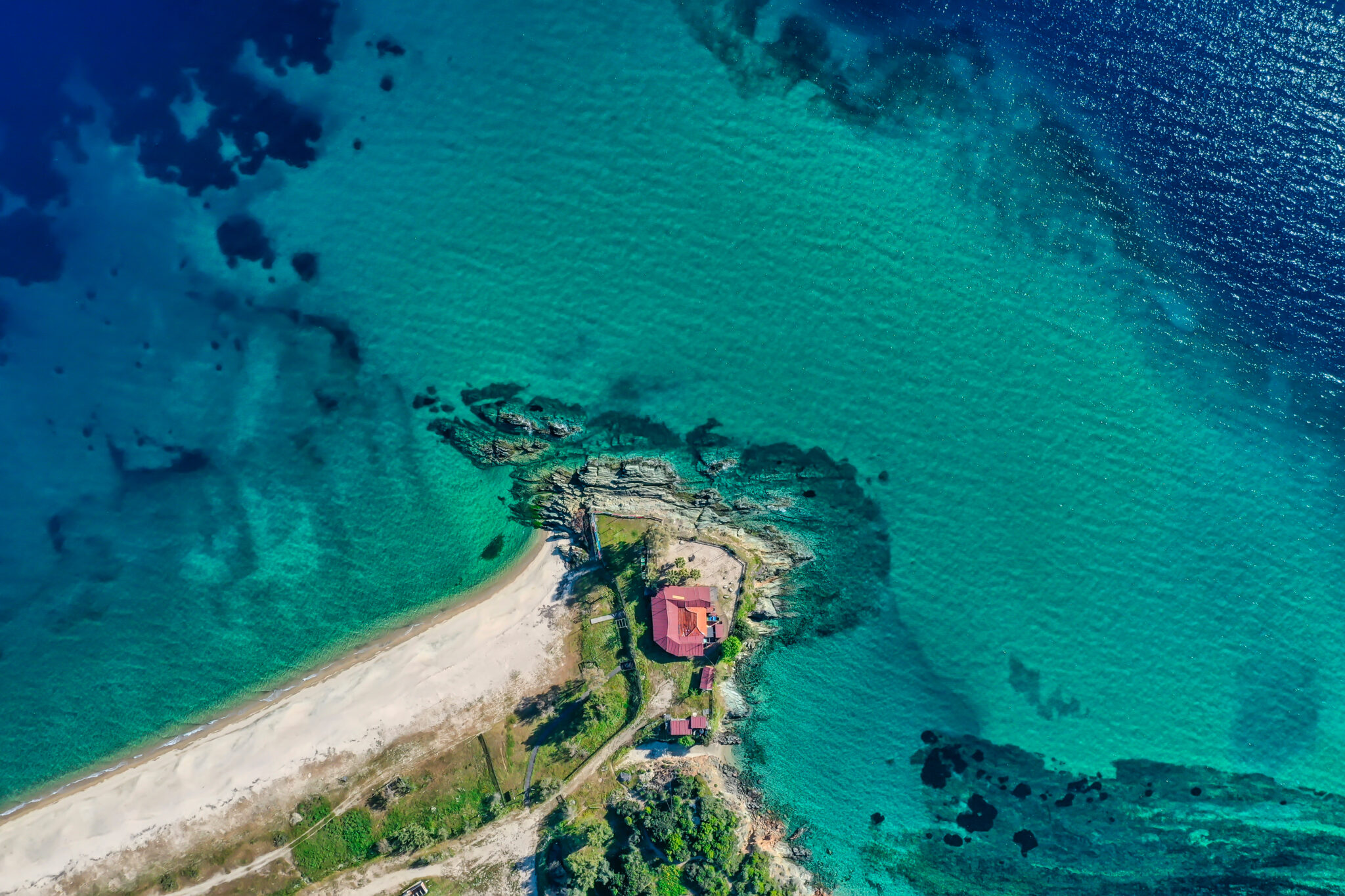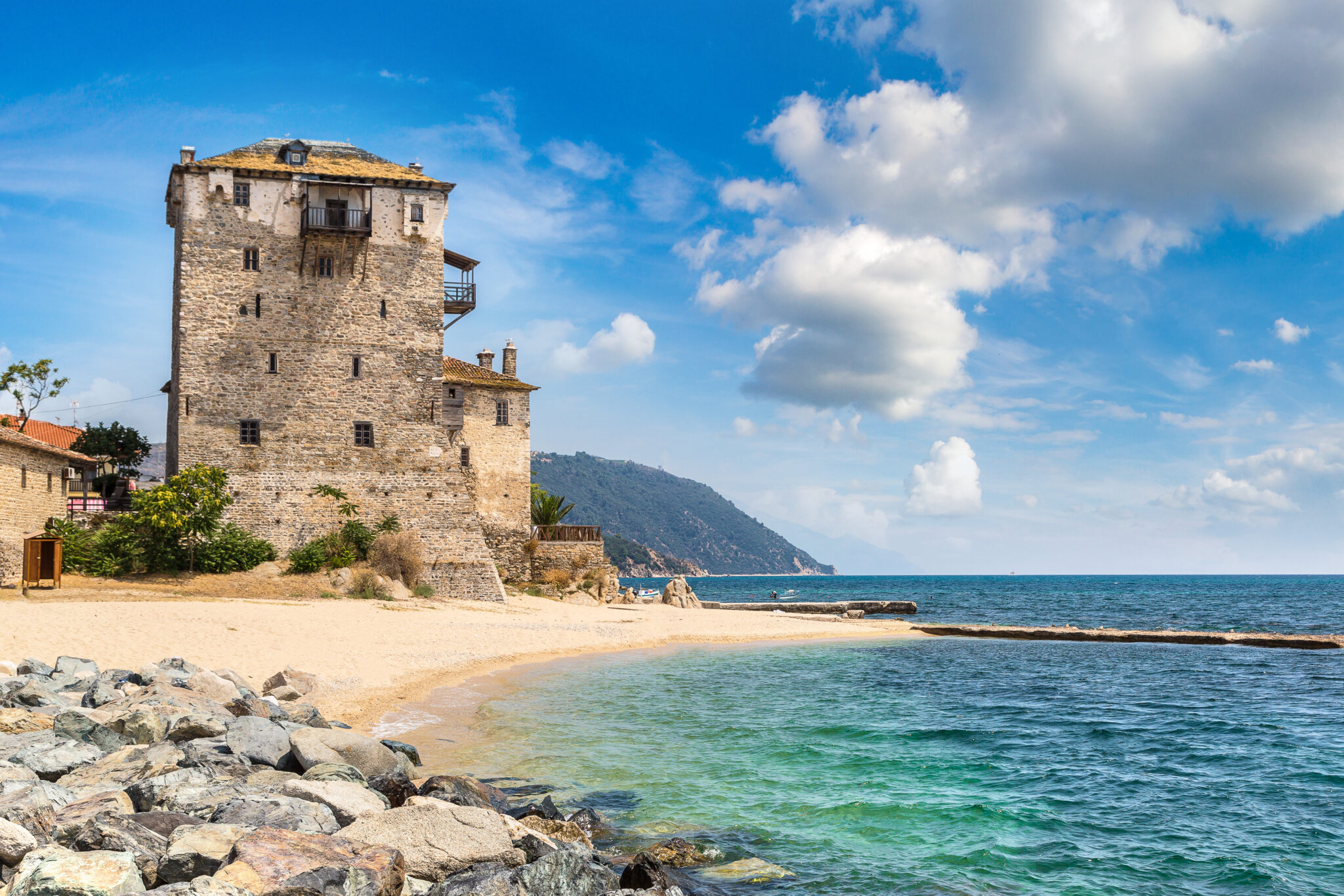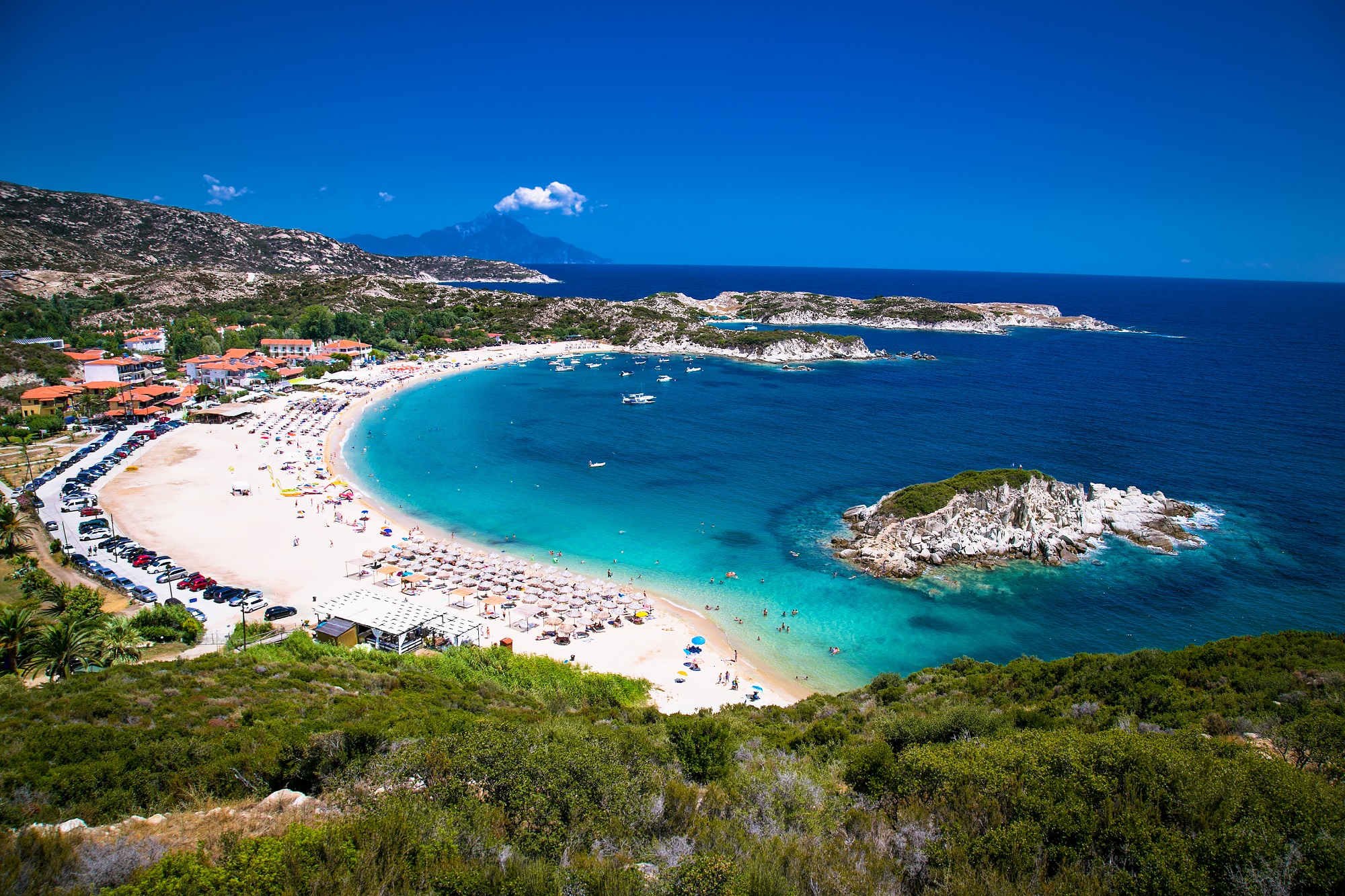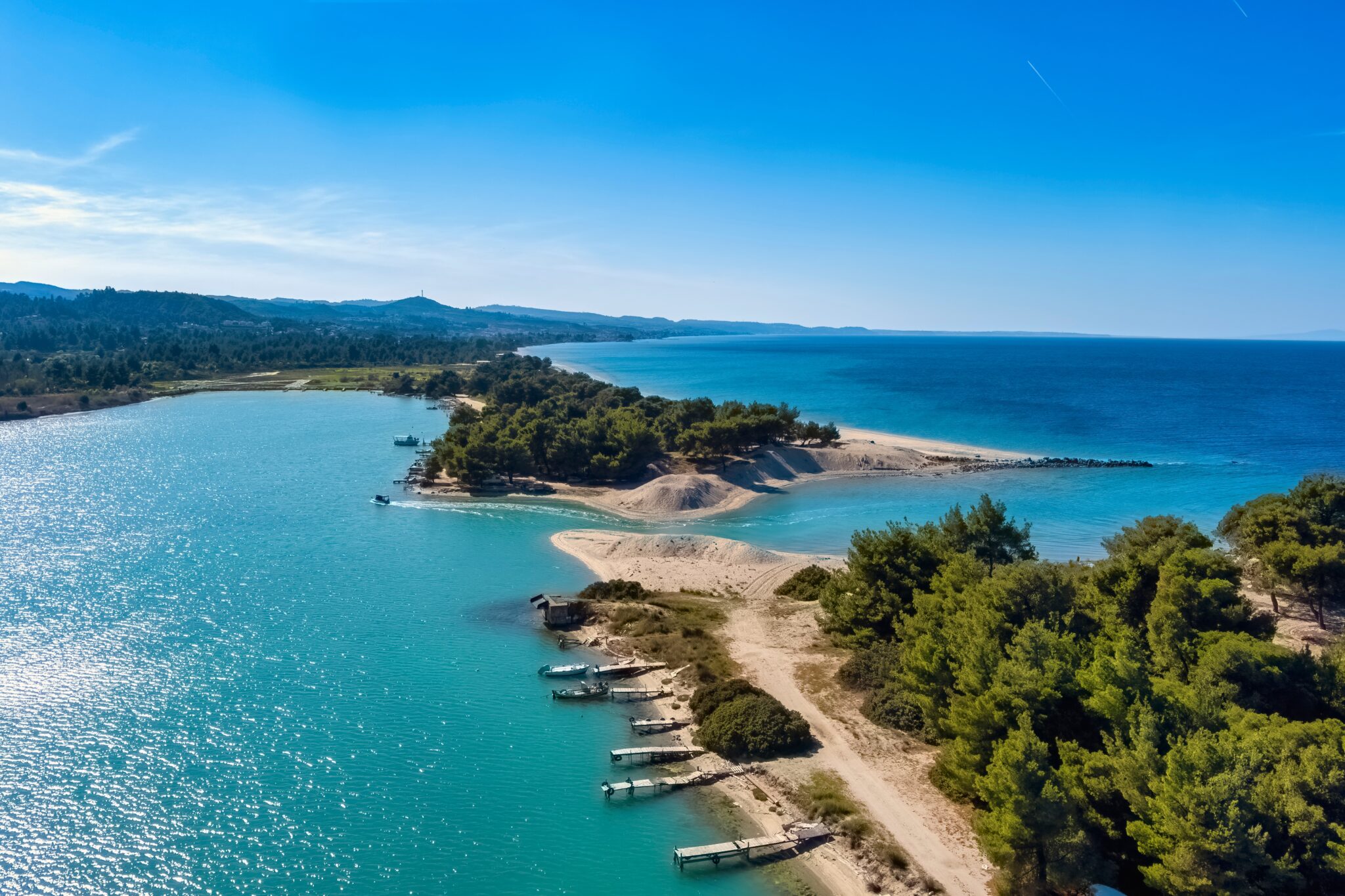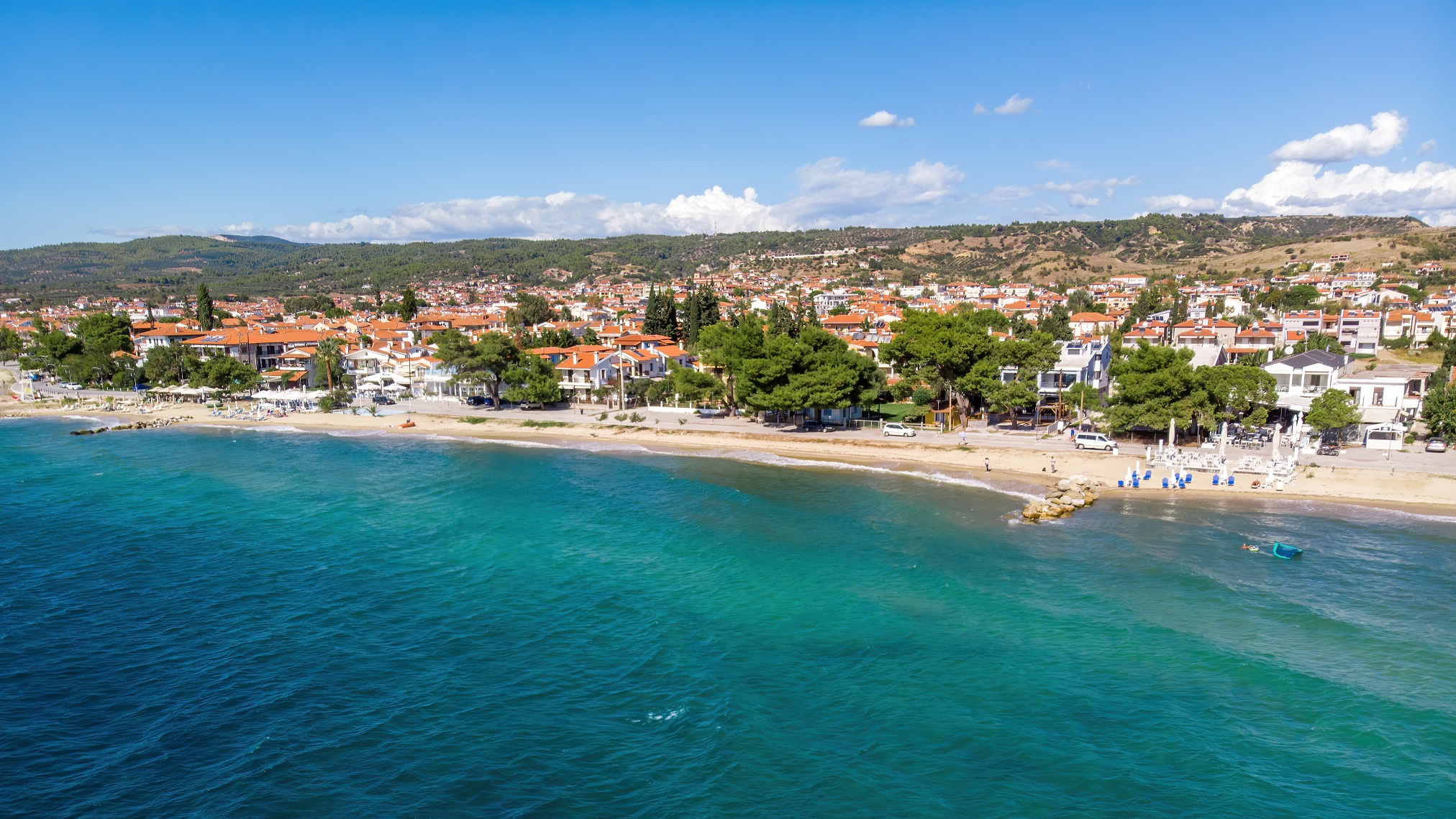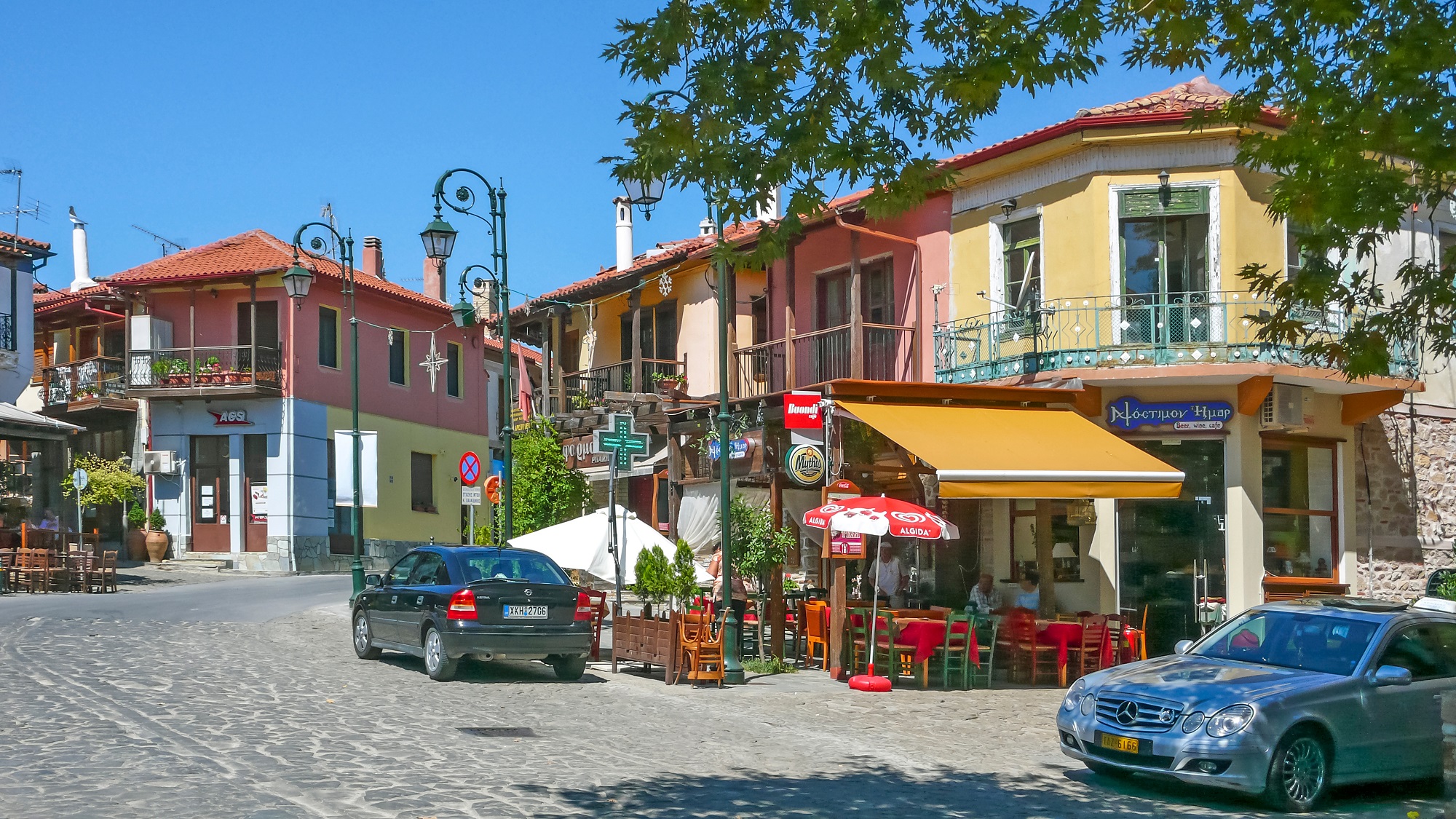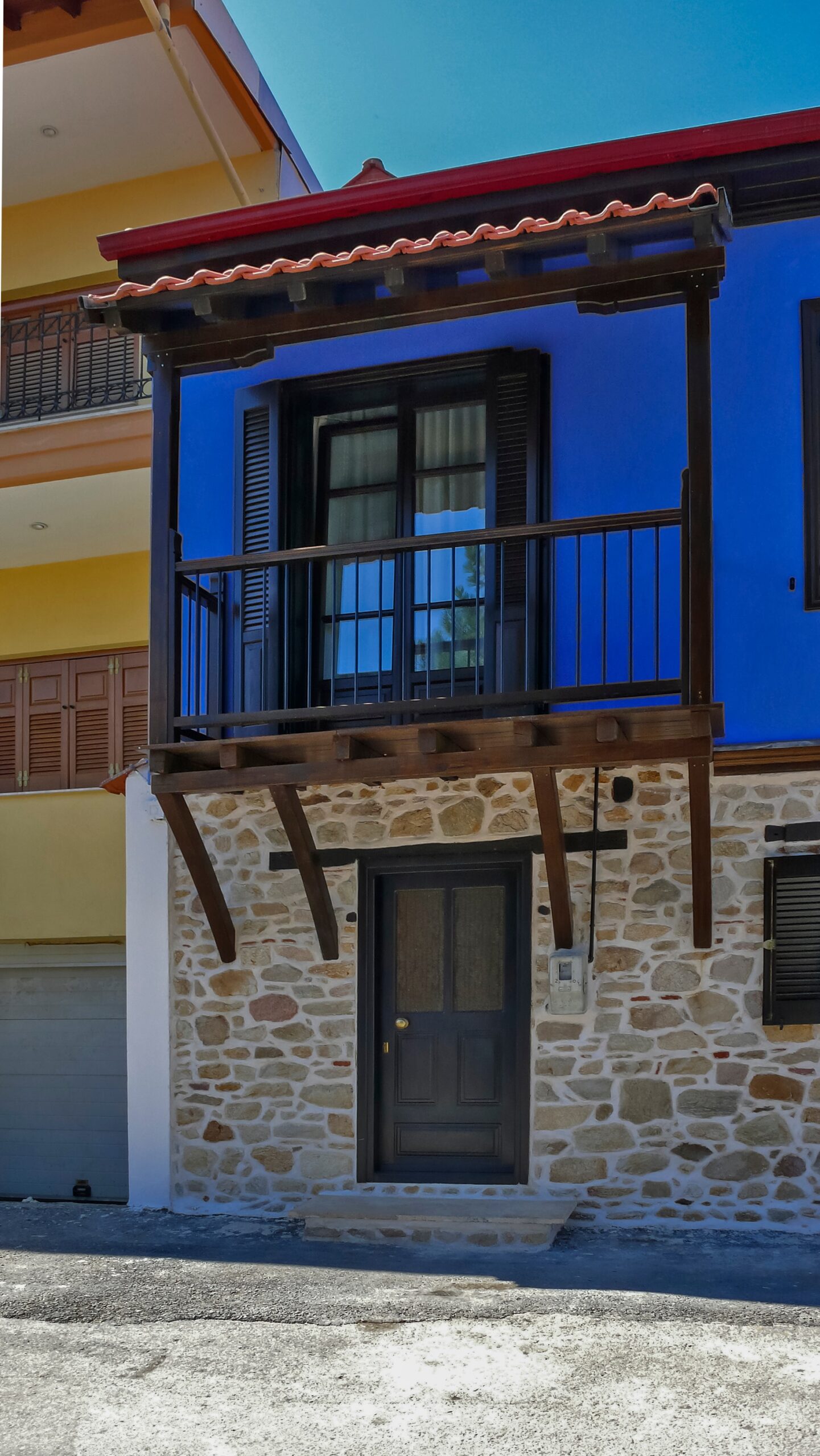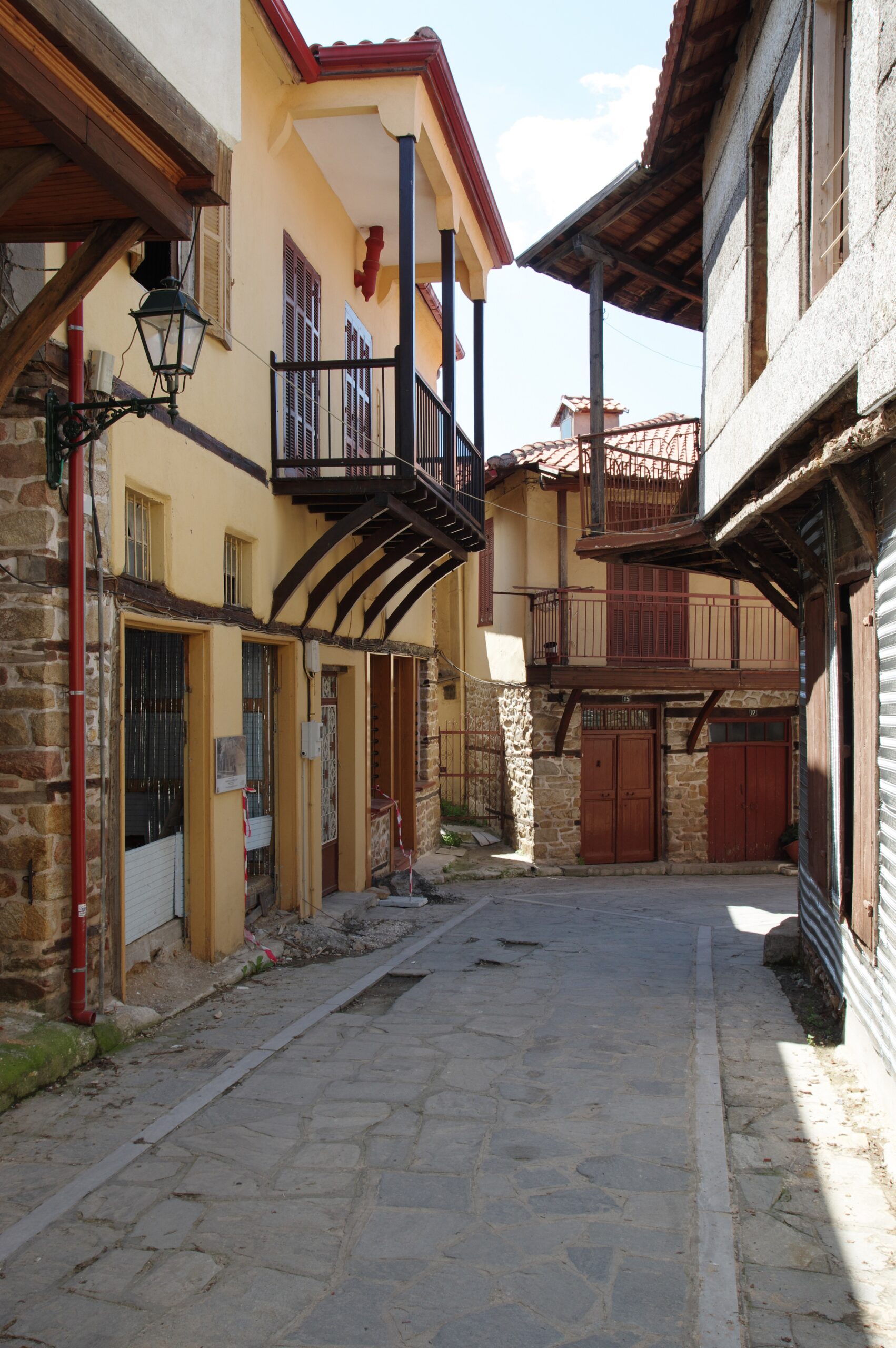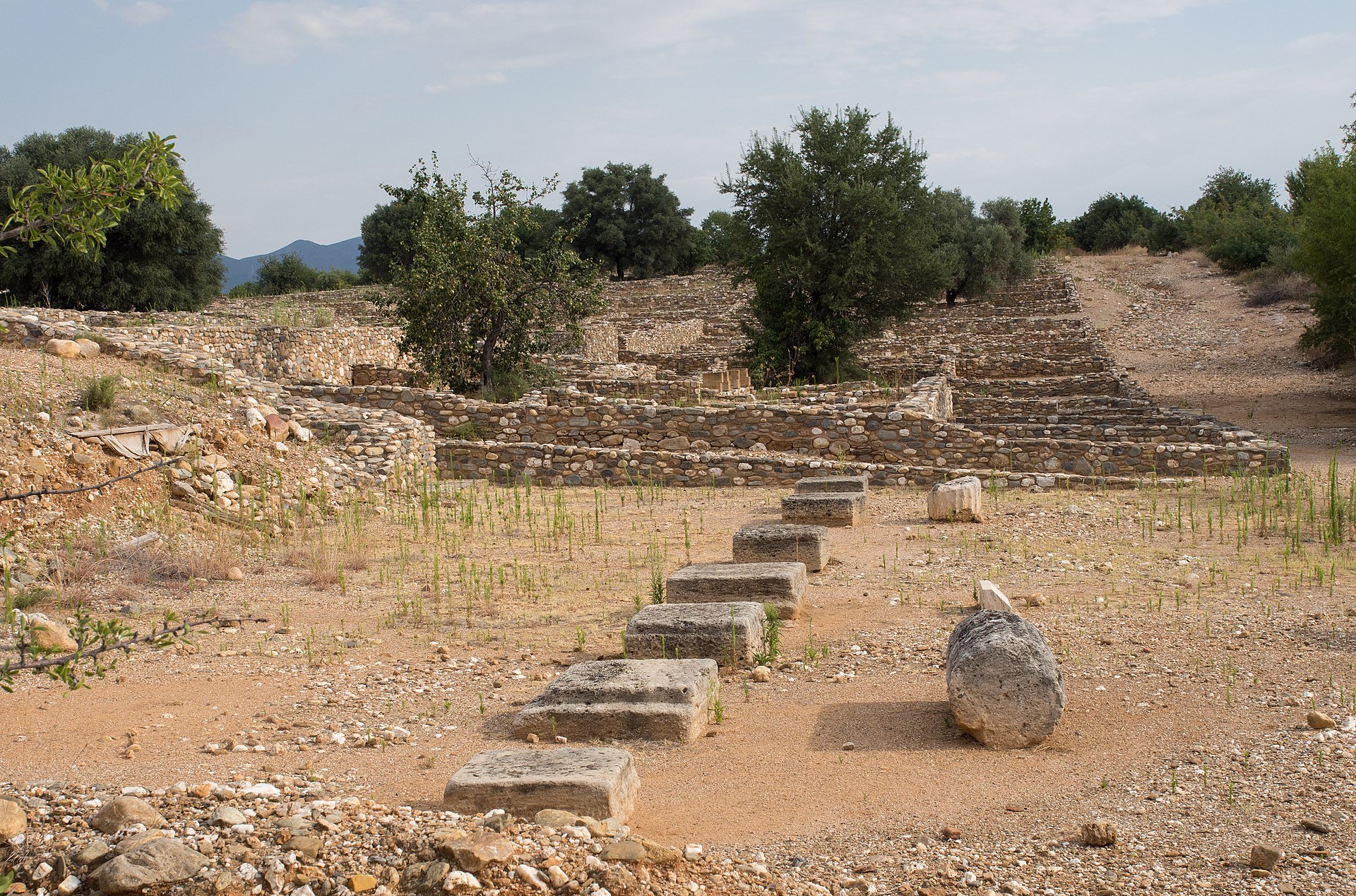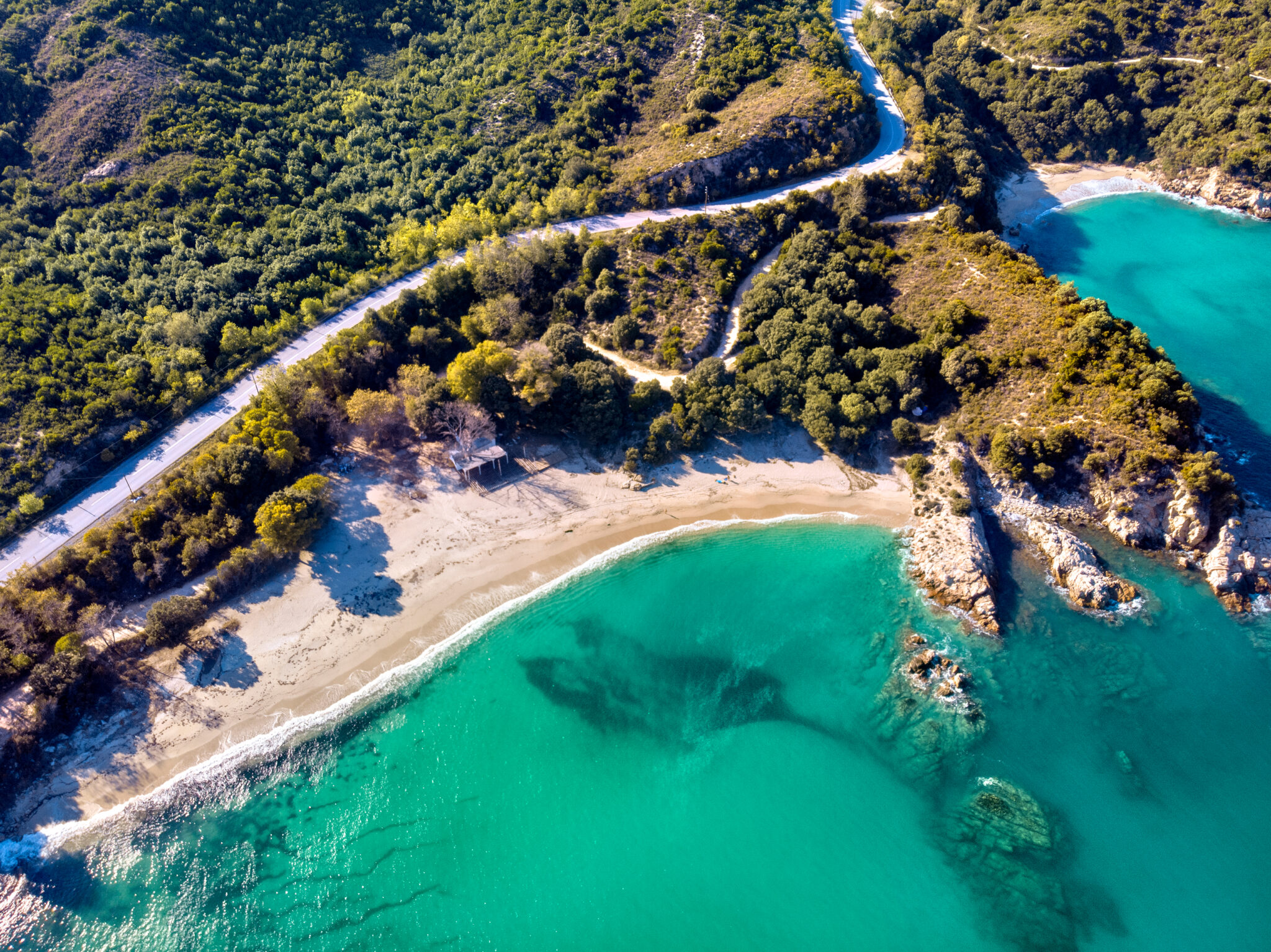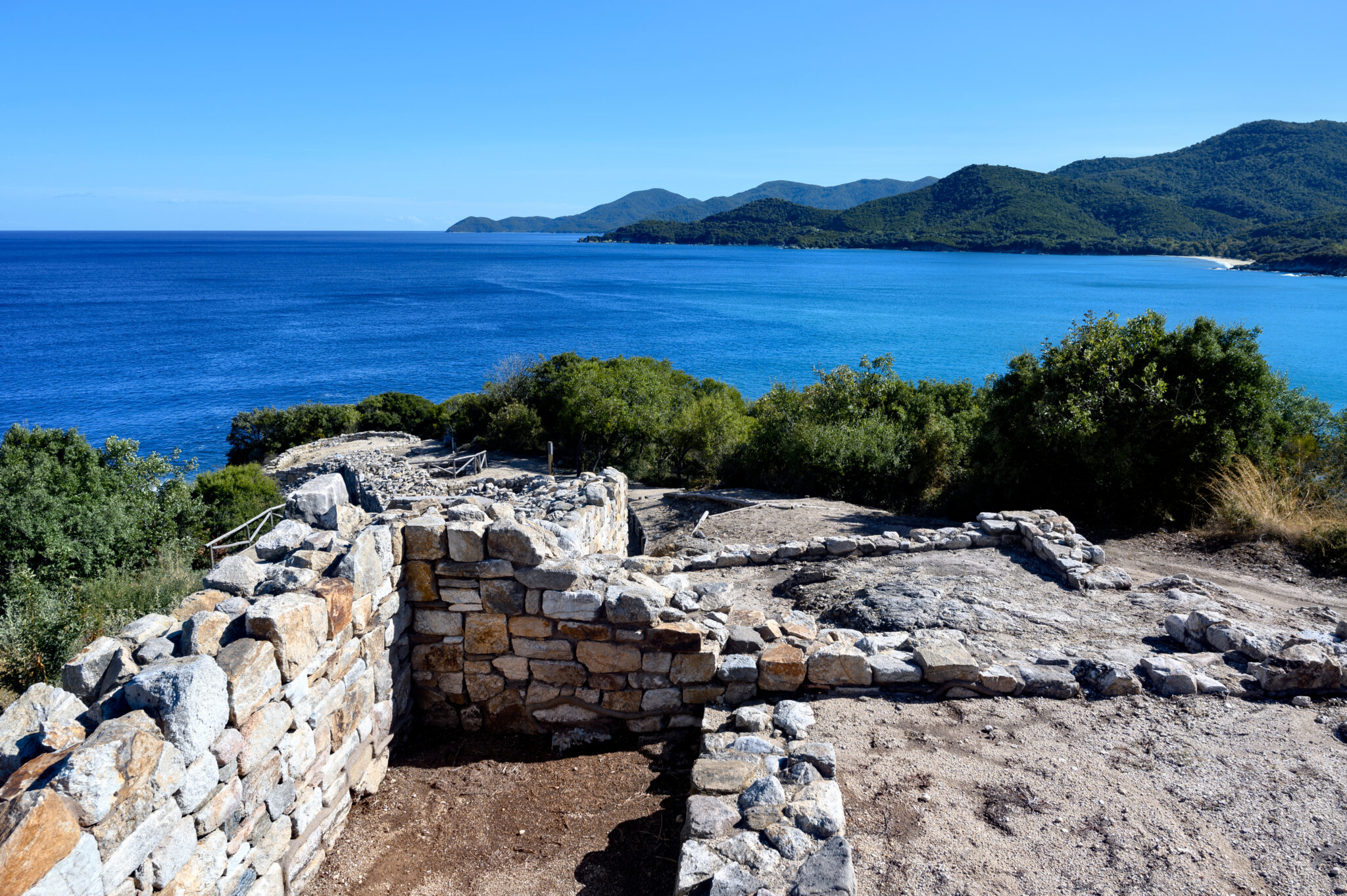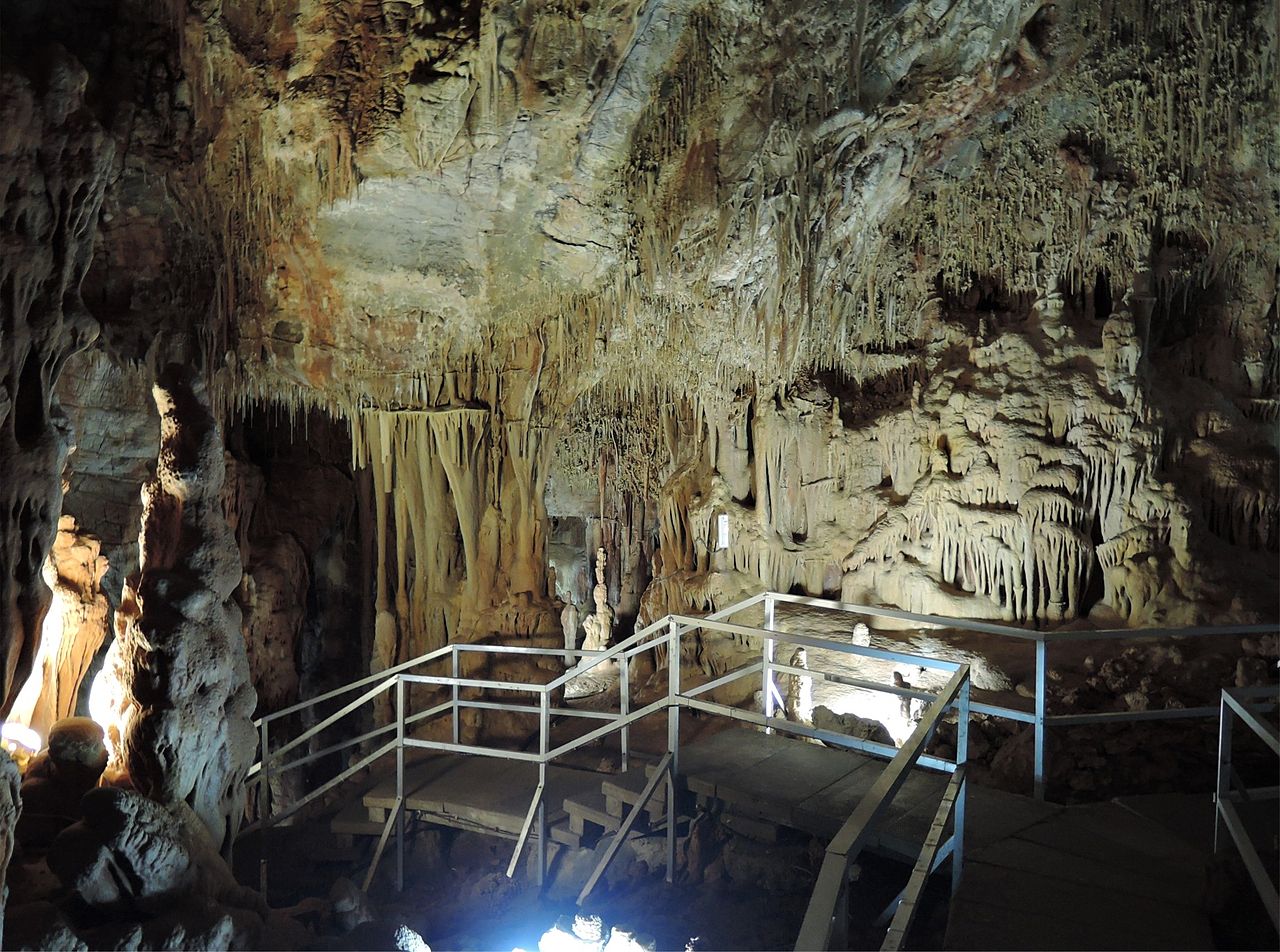This article presents an informative guide through historical landmarks, quaint villages, ancient towers, and contemporary museums. Traverse Halkidiki’s intriguing towers that provide insights into the area’s heritage, explore enchanting hillside and coastal villages, and delve into the region’s past at archaeological sites such as Olynthus and Stagira. Experience local museums, including the Arnea
Weaving Museum and Petralona Anthropological Museum. Lastly, appreciate the lively atmosphere of Sani Marina, a harmonious blend of luxury and tradition. Discover the fascinating attractions of Halkidiki through this comprehensive exploration.
Towers of Halkidiki
Halkidiki’s towers, such as those in Galatista, Krounas in Lerissos, Sanis, and Nea Fokea, offer a captivating glimpse into the region’s rich history. Each tower boasts a distinct architectural style and served varying purposes, chiefly for defence from pirates or other invaders. The Prosforios Tower in Ouranopoli is particularly interesting, as it reveals different aspects of Halkidiki’s history.
Constructed in the 14th century by Vatopedi Abbey monks, the tower is part of a fortified complex and serves as a base for the Prosforio Monastery. Showcasing Byzantine and Turkish architectural influences, the tower has a wooden interior dating to the 19th century. In 2019, it housed an exhibition featuring ancient artefacts from northeastern Halkidiki and the Zygos Monastery. The tower is open daily, except Tuesdays, from 08:30 to 16:00, with a €2 admission fee.
Top Villages
The vast region of Halkidiki has both mountainous and seaside villages, each with its own individual charms. Kassandra, the first peninsula, is the most popular destination in the region, thanks to its beautiful beaches, lively nightlife, and bustling atmosphere. If you prefer a more peaceful, explore laid-back vibe, head to Sithonia, the middle peninsula of Halkidiki. Here, you’ll find hidden gems like secluded coves, pristine beaches, and charming fishing villages that exude a timeless charm.
Parthenonas
Located on the slopes of Mount Itamos, the quaint village of Parthenonas can be found at an elevation of 350 metres on the Sithonia peninsula. As the 1960s drew to a close, its residents began departing for work opportunities, which led to the complete desertion of the village. In a surprising turn of events, just a few years later, the village’s enchanting old houses and picturesque streets caught the attention of international tourists. This newfound interest led to Parthenonas gaining protected village status and ushering in a period of renewed prosperity.
Presently, Parthenonas is a charming settlement characterised by its well-preserved stone buildings and carefully maintained flagstone streets. Its old municipal schoolhouse has been transformed into the Local History and Folk Museum, and annually it hosts the “Cinema in the Village” film festival (see Activities).
Nikiti
Nikiti is on Sithonia’s north-western coast, in the central peninsula of Halkidiki. Take a leisurely stroll along the seafront for lovely views, and make sure to visit its old part, Palia Nikiti, a historic village that’s over 700 years old. Founded in the 14th century, this village has preserved its traditional atmosphere, with stone houses crowned with ceramic-tiled roofs. To further explore the area’s past, the Historical and Folklore Museum of Nikiti offers a comprehensive collection of exhibits showcasing the region’s history. Established only two years ago, this museum can be reached at (+30) 23750-23615. Admission is free, and the museum welcomes visitors from early June until late September. In addition to its history, Nikiti is also known for its pristine beaches, such as Kalogria and Agios Ioannis, which offer crystal-clear waters for swimming and sunbathing.
Arnea and its Museums
Arnaia, an architectural treasure, is situated in Halkidiki’s eastern hinterland, perched at 600 metres on the slopes of Mount Holomon. This town is renowned for its traditional two-story stone houses, often adorned with colourful exteriors in hues of pink, ochre, or blue. Arnaia takes pride in its exquisite woven fabrics, delicious honey, and flavourful cheeses. The area enjoys pleasant summer temperatures, perfect for exploring the charming, stone-paved streets. Visit the Church of Aghios Stephanos, unwind in the main square, or enjoy a serene picnic in the nearby Aghia Paraskevi’s Alsos, known as “The Grove”.
Arnea Weaving Museum: When in Arnea, be sure to visit the Mouseio Yfantikis Arnaias and see wonderful examples of Arnaia’s weaving tradition. The museum’s exhibits, including intricately designed rugs and carpets, along with traditional weaving tools, bring the area’s weaving heritage to life. Discover the secrets of age-old colouring techniques, which involved the use of berries, shells, onion peels, and beets as natural dyes. Housed in a beautifully restored stone building from 1870, the museum was once the property of renowned local weaver Charikleia Dimitrakoudi. To schedule a visit, contact the municipality (Phone: +30 23723.501.21).
The Historical and Folklore Museum of Arnea: Situated in the heart of Arnea in Halkidiki, the Historical and Folklore Museum is housed within an 18th-century, two-storey building. The museum’s ground floor showcases an array of agricultural instruments used for sowing, reaping, and threshing, as well as equipment for bread-making, such as millstones and bread stamps. Additionally, visitors can admire beekeeping tools and carpentry equipment on display. On the first floor, the museum exhibits various household items, including a loom, spinning wheel, coffee-making utensils, and cooking equipment. One of the museum’s most remarkable pieces is a 200-year-old fire engine, which is based on the ancient Greek mechanic Ctesibius’ force-pump invention (285-220 BC).
Sani Marina
Cosmopolitan Sani Marina, situated along the picturesque northwest shoreline of Kassandra, is Halkidiki’s most sophisticated and vibrant area. Perfect for people-watching and leisurely evening ambles, it also has a good variety of shops selling top international and Greek brands. The marina also boasts a diverse selection of dining experiences, from Asian fusion and contemporary Mediterranean cuisine to the catch of the day at traditional seafood tavernas.
For those looking to unwind, stylish bars and upscale delicatessens provide a relaxed atmosphere to savour local and international delicacies. Sani Marina is not only a haven for luxury yachts but also hosts various events throughout the year (See Activities), including sailing regattas, music events and gourmet festivals, adding a touch of excitement to the vibrant atmosphere. As the sun begins to set, the marina truly comes alive. The reflections of the moored yachts dance on the water, mingling with the warm hues of the sunset to create an enchanting and picturesque scene that captivates visitors and locals alike.
Ancient Olynthus
Close to the village of Aghios Mamas in Sithonia lie the ruins of Ancient Olynthus, a city reputedly established by Olynthus, the son of Heracles. This significant archaeological site in Halkidiki (open Wed-Mon 08:30-15:30, Tel. (+30) 2310.285.163) holds great historical importance. As mythology states, Olynthus was the son of Strymonas, the King of Thrace, who perished during a lion hunt. The city was built by Vraggas, Olynthus’s brother, in his honour and memory. Between 1928 and 1938, major excavations led by Professor David M. Robinson, an American archaeologist, uncovered fascinating remnants of the ancient city.
The visible structures illustrate the sophisticated Hippodamean urban planning system, and the site is also home to some of Greece’s oldest known mosaic floors. Many artefacts discovered at Ancient Olynthus can be found in the local museum in Olynthos village, offering visitors an intriguing insight into the past. The museum features an audio-video display, providing a comprehensive tour of the archaeological site. Dating back to the 7th century, the city was initially inhabited by the Macedonians and is uniquely positioned on two rounded hills, adding to its allure.
Ancient Stagira
In close proximity to the village of Olympiada, lies the historically important site of Ancient Stagira. The town of Olympiada, named in honour of King Alexander’s mother Olympia, is primarily renowned for its association with this ancient settlement. Positioned on the northeastern flank of Halkidiki, Stagira (a mere 95 kilometres from Thessaloniki) is thought to be the birthplace of the eminent philosopher Aristotle. Systematic excavations commenced in 1990, revealing an array of artefacts that are now exhibited in a space within Olympiada. Established in 655 BC by Ionians hailing from Andros, the site has also unveiled an assortment of Paleolithic tools, bones, and the remnants of long-extinct fauna. These fascinating findings are showcased at the esteemed Archaeological Museum of Polygyros.
Cave of Petralona & the Anthropological Museum
Located near Nea Moudania in Kassandra, Halkidiki, at an altitude of 300 metres on the western slope of Mount Katsika the internationally renowned cave is admired for its fossilised skull and bones of the Petralona Archanthropus unearthed in 1959, which dates back 700,000 years, as well as impresive stalactite and stalagmite formations. Excavations have also revealed a wealth of Paleolithic tools, bones, and long-extinct fossilised animals.
The cave’s “Great Hall” boasts enormous white coral-like stalagmites, while the “Hall of Roots” features a network of delicate roots that have pierced the cave’s ceiling. In the “Cemetery of Giants” section, bones from 14 different types of animals were discovered. Note: Visitors to the cave are not permitted to use cameras or mobile phones as flash photography can damage the fragile stalactite and stalagmite formations.
The extraordinary findings from this cave, along with replicas and reconstructions, are exhibited at the Anthropological Museum of Petralona, open daily from 9 a.m. until an hour before sunset. Here you’ll see a replica of the original skull; the authentic skull is housed in the palaeontological collection of the Aristotle University Museum in Thessaloniki.
Read also:
Agridia: Idyllic Halkidiki beach with crystal-clear waters
Varvara waterfalls: Miracle of nature in Halkidiki
Eastern Halkidiki, Greece: an alternative destination for amazing routes in nature and history



